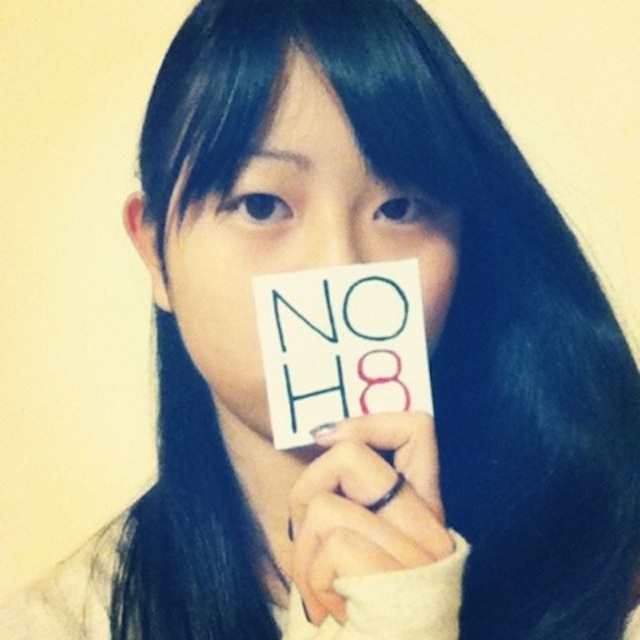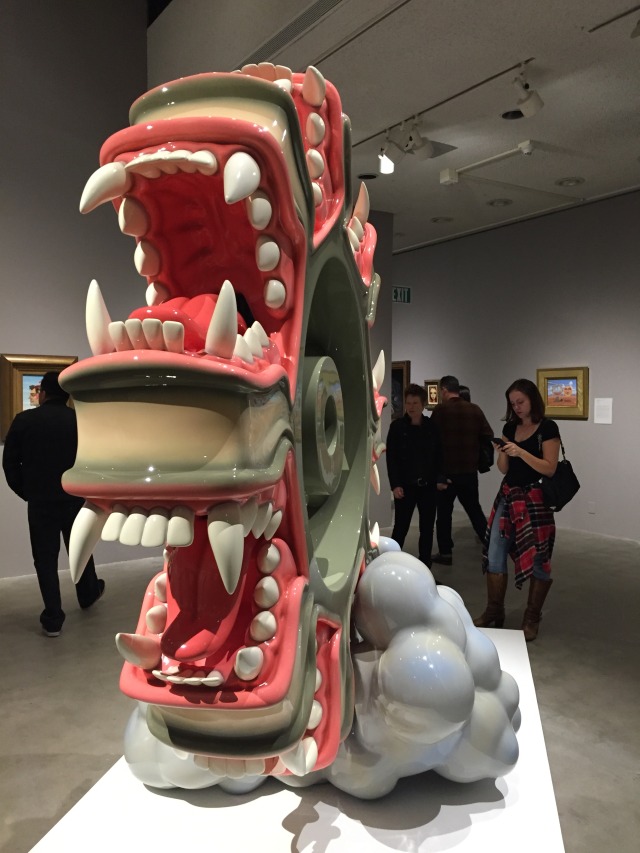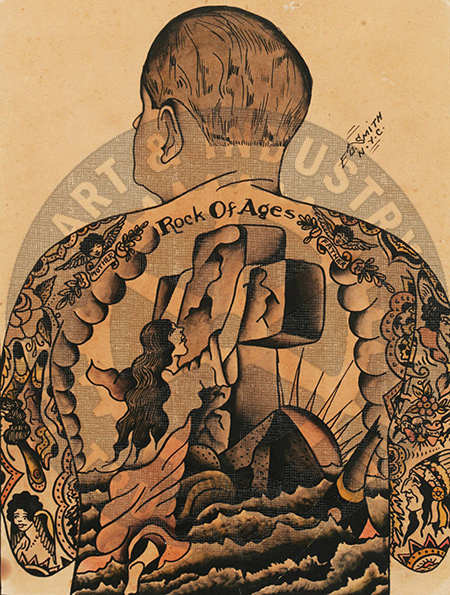
Tattoos on the Barbary Coast: Part II
Everything hidden creeps up through the sidewalks oozes through the cracks, crimes crying to be solved. Shanghaied, rolling out under the Golden Gate.
Fog horns freight train whistles odd night noises music or.... tattoo signs, an old jackknife and some papers, a bottle of ink dried up now, somehow the big sheets made it by, floating mermaids and lovesick sailors, a bowling ball in the corner of the old pine floor, flash sheets with dragons, a fish, many little birds and a mystery of the bejeweled twins who, with a wink and a smile, live eternally young from these pages.
Captain Jack Howard, SF 1920's

Sailor Jerry Master Draughtsman
These old tattoo guys were good. Try this at home. Copy freehand (no cheating by tracing) a Sailor Jerry dragon. Or anything else by one of the great masters like him. Not so easy.
Now, try to get it down on somebody's back at midnight in tight quarters with a large group of servicemen watching on a Saturday night in Honolulu's Chinatown. Rubber gloves on, buzzing tattoo machine, trying to get the right ink balance, light touch but the right touch. Ouch, the victim sez.
Just trying to copy the original drawing's enough for me. And doing a mediocre job at that, thank you very much. Really doesn't look that bad. That is, until you look at the original.

 Sailor Jerry, soft pencil on tracing paper, 11 by 14 inches, date unknown. From the esteemed Sailor Jerry Swallow collection by way of Mike Malone from the original China Seas, Honolulu, Hawaii.
Sailor Jerry, soft pencil on tracing paper, 11 by 14 inches, date unknown. From the esteemed Sailor Jerry Swallow collection by way of Mike Malone from the original China Seas, Honolulu, Hawaii.
Here There Be Dragons.
Like an inscription written in the turbulent sea-ed corner of an antique map of the old world these dragons speak of horrors in unchartered seas. Rolling in and out of waves. Think of these guys and you'll be sure to crush your collarbone body surfing the Wedge in Newport. Not to be trifled with matey, watch for these two coming up through a swell.

Born Yoshihito Nakano, Horiyoshi III (b. 1946) received his current title from the late tebori master Yoshitsugu Muramatsu, also known as Shodai Horiyoshi of Yokohama. Beginning at age sixteen, Horiyoshi III served as Shodai Horiyoshi’s apprentice for ten years. By age twenty-eight Horiyoshi III’s bodysuit was complete, hand-tattooed by Shodai Horiyoshi.
Though ukiyo-e officially ended in 1868, Horiyoshi III carries on the spirit of Edo’s “pictures of the floating world” in his work, all the while incorporating his own style and a contemporary perspective. This sensitivity to tradition extends beyond his tebori. In recent years, Horiyoshi has concentrated on traditional kakejiku (scroll paintings). Rendering Japanese folktales, calligraphy and religious subjects in sumi (black ink) and traditional mineral pigments, Horiyoshi III interweaves past, present and future.
In addition to painting and drawing, Horiyoshi III tattoos full time, publishes books of his drawings and is the founder of Japan’s only tattoo museum with his wife, Mayumi, in Yokohama. With over forty years of experience, Horiyoshi III is the foremost authority on traditional Japanese tattooing.
Whitney Museum Awards
Dispatch from the Annual Awards for Design Excellence at the Whitney Museum.
Invited as holdovers from the Giuliani Administration, there is a whole new crowd here; goateed hipsters, women with green hair and folks who wear shirts with buttons on the back of the shirt (?.) Free Brooklyn Lager and the cutest little ice cream cones made the event special.
 Your intrepid Lift Trucks staff writers hard at work.
Your intrepid Lift Trucks staff writers hard at work.
The awards were given out for things like public bathrooms, community gardens and junk like that.
Our personal target was Tom Finkelpearl, the Commissioner of the NYC Department of Cultural Affairs. We tracked him down and introduced ourselves handing over a crisp new Lift Trucks Project card. He looked confused.
A little later, hoping for better results, we presented another card. He said thanks but already has one. This was a little awkward.
Unfortunately we presented yet another card at the end of the evening as he walked down the sidewalk. Ooops. A loud disagreement ensued between the Lift Trucks reporters about party etiquette. The words 'blockhead' and 'moron' were liberally thrown around.
Mr. Tom Finkelpearl ran down the street waving his hands above his head in a fluttering motion.
About the Commissioner
 Tom Finkelpearl is the Commissioner of the New York City Department of Cultural Affairs. In this role he oversees city funding for nonprofit arts organizations across the five boroughs and directs the cultural policy for the City of New York. Prior to his appointment by Mayor Bill de Blasio, Commissioner Finkelpearl served as Executive Director of the Queens Museum for twelve years starting in 2002, overseeing an expansion that doubled the museum’s size and positioning the organization as a vibrant center for social engagement in nearby communities. He also held positions at P.S.1 Contemporary Art Center, working on the organization’s merger with the Museum of Modern Art, and served as Director of the Department of Cultural Affairs Percent for Art program. Based on his public art experience and additional research, he published a book, Dialogues in Public Art (MIT Press), in 2000. His second book, What We Made: Conversations on Art and Social Cooperation (Duke University Press, 2013) examines the activist, participatory, coauthored aesthetic experiences being created in contemporary art. He received a BA from Princeton University (1979) and an MFA from Hunter College (1983).
Tom Finkelpearl is the Commissioner of the New York City Department of Cultural Affairs. In this role he oversees city funding for nonprofit arts organizations across the five boroughs and directs the cultural policy for the City of New York. Prior to his appointment by Mayor Bill de Blasio, Commissioner Finkelpearl served as Executive Director of the Queens Museum for twelve years starting in 2002, overseeing an expansion that doubled the museum’s size and positioning the organization as a vibrant center for social engagement in nearby communities. He also held positions at P.S.1 Contemporary Art Center, working on the organization’s merger with the Museum of Modern Art, and served as Director of the Department of Cultural Affairs Percent for Art program. Based on his public art experience and additional research, he published a book, Dialogues in Public Art (MIT Press), in 2000. His second book, What We Made: Conversations on Art and Social Cooperation (Duke University Press, 2013) examines the activist, participatory, coauthored aesthetic experiences being created in contemporary art. He received a BA from Princeton University (1979) and an MFA from Hunter College (1983).

And then there was Ms Shibata, head of the Percent for Art Program, person. What does "NoH eight" mean anyway? Maybe referencing the golf term meaning no score over a "snowman" per hole.
Just in from the Commissioner's Office.
During a brief meeting with staff members today, Commissioner Tom Finkelpearl announced that members, associates and any others in any way affiliated with "Lift Truck Projects”
will be summarily banned from any and all future cultural events in Manhattan’s five boroughs. This ban was initiated following an incident at last night’s Annual Awards for Design Excellence at the Whitney Museum. Mr. Finkelpearl also announced that a study is underway to determine the ingredients inside “those fucking ice cream cones” as they may have allegedly caused some participants at the event to behave in a manner not befitting such an high-powered societal event. In an added effort, Commissioner Finkelpearl’s staff admitted that he is also considering banning alcoholic beverages from being served at such events. Two unidentified buffoons were allegedly spotted accosting Commissioner Finkelpearl several times during last night’s event, according to a member of Commissioner Finkelpearl’s staff, who asked not to be identified. Organizers at the Whitney Museum stated that they are investigating the case and offered their apologies to Commissioner Finkelpearl for any inconvenience. The Whitney will be tightening security for all future events.
Juxtapoz Opening Party
By Richard Osaka, Lift Trucks Special Report
Barnsdall Park,Los Angeles
I hunted for celebs, Molly, etc. I was there for over an hour and walked throughout but only spotted Roger Daltrey from The Who. Didn't want to take his pic. Ed Ruscha was there but the only reason I know this is that I saw his picture with Robt. Williams. From the image's outdoor lighting I could tell that it was taken very early and maybe there was a preview before the opening. I also saw a picture of Molly Barnes. I definitely know what she looks like but I completely missed her. Maybe I got there too late.







Tattoo Show Opens September 18th

Saira Hunjan | Jef Palumbo | Duke Riley | Noon | Nazareno Tubaro | Amanda Wachob | Jacqueline Spoerle | Colin Dale | Scott Campbell | Peter Aurisch | Chuey Quintanar | Horiren First | Alex Binnie | Minka Sicklinger | David Hale | Stephanie Tamez | Virginia Elwood | Yann Black
Bound to a limited visual lexicon for over a century, tattooing has sprung free in the new millennium, liberated by artists who combine fresh concepts, holistic design, and masterful technique in thrillingly original styles. They draw inspiration from historical genres spanning Pointillism, Expressionism, Pop Art, and Photorealism; from an array of timeless ethnographic traditions; from illustration and graphic design, comics and street art; from regional folk arts; and from the Japanese style that has informed Western tattooing for the past century. The artists presented in “Body Electric” confirm that tattooing has turned a corner into an entirely new realm of artistic possibility. They are auteurs of body art.
“Body Electric” introduces a new generation of conceptual trailblazers. The visual art featured here reflects their tattoo sensibility—the next best thing to showcasing the living canvases that bear their designs. They hail from around the globe: In Lucerne, for example, Jacqueline Spoerle uses Swiss folk motifs in lyrical silhouettes perfectly suited to tattoo’s inherently graphical nature. In Los Angeles, Chuey Quintanar takes fine line black and grey portraiture to a new level of grace and power. New Yorker Duke Riley’s maritime narratives betray a blush of nostalgia through strong line work and meticulous cross-hatching. In Argentina, Nazareno Tubaro blends tribal, Op Art, and geometric patterns in flowing compositions that embrace and complement human musculature. And in Athens, Georgia, David Hale, a relative newcomer, folds the curvilinear lines of Haida art into his folk-inflected nature drawings.
The exhibition includes a selection of flash art spanning the late 19th to mid-20th century. These pieces, many by titans of the trade--George Burchett and Sailor Jerry Collins among them--represent the keystone style of Western tattoo tradition and the semiotic conventions that define it, from hearts and anchors to pinups and crucifixes. Conveying both the charms and limits of these pioneers, they offer a baseline for understanding the evolution of tattooing over the course of the past century.
By bringing visual sophistication and art historical engagement to their work, the new auteurs have freed tattooing from the subcultural parameters that both sustained and restricted it for over a century. They’ve opened the door to an exhilarating new pluralism, reimagining this art for the 21st century.
*Excerpted from “Visionary Tattoo,” an essay by Margot Mifflin, Guest Curator
 Alex Binnie
Alex Binnie Bert Grimm
Bert Grimm
 Amanda Wachob Avital
Amanda Wachob Avital
 Virginia Elwood
Virginia Elwood
 Ed Smith
Ed Smith Duke Riley Swinburn
Duke Riley Swinburn Jacqueline Spoerle
Jacqueline Spoerle Horiren First
Horiren First
The Stoney Age
This is Stoney St Clair's third and final stage of tattooing. He started out doing the classic tattoo imagery, progressing along to a transitional drawing style like this cover up image seen below.

His style evolved into a wild, totally unique style of tattoo art wholly his own.

Let Us Now Praise Dainty Dotty and All Circus Women


We love Dainty Dotty and we feel she loved us. Just look at that smile.
Through exhaustive research we believe that Dotty was indeed the Fat Lady sitting next to Major Mite in this famous story about the Rubber Man and Mae, the Tattooed Lady.
Herewith and paraphrasing Albert Parry's, 1933 " Tattoo, Secrets of a Strange Art as Practised among the Natives of the United States."
While on tour with a circus in the summer of 1927, the India Rubber Man fell in love. Professor Henri, in real life Clarence H. Alexander of Ypsilanti, Michigan could stretch his neck seven inches, his arms and legs twelve inches, He was fourty three years old, a professional freak since he was twenty three. His object of attention was Mae, a tattooed gal just twenty, a trooper less than two years. Their associates called them "Tattooed Mae and Rubber November," sadly noting that Mae lacked a trooper's psychology. She was a spectator, the Rubber Man was to her, not a fellow player and possible life mate, but a freak. While Henri Alexander was in love with her tattooings she was repelled by his deformity. She was frightened when he used his elastic magic to pass love notes to her over the heads of the fat lady (Dotty?) and the midget (Major Mite?) sitting between them on the platform.
Could this be Dotty's first exposure to the magic allure of tattoos? She soon after gave up the fat lady career path and took up electric tattooing. A seemingly more gentile profession. She started in Detroit where she met and subsequently married Owen Jensen. Together they moved west to Sunny California, famously establishing themselves as tattoo artists on the Pike in Long Beach.
Winning the Fat Lady




Jazz & Wine, Behind the Scenes at the Drive-By Gallery
Another smashing event at Lift Trucks: Louise Baranger and her rockin' Jazz trio accompanied Fred Tregaskis with his talk (also heard on NPR) about how wine and jazz came together in the 20th century. The fund raiser for our district Asemblyman Robert J. Castelli brought the crowds in. A well heeled reception here for the newest and most excellent Lift Trucks Discovery: Artist Erica Hauser's stunningly simple paintings of America. Drive By, view the paintings from the comfort of your own car!

Oscar “Andy” Hammerstein III chats with ART&INDUSTRY…
“A hopeless shill” is how Oscar Hammerstein III — Andy, to his very dear friends at ART&INDUSTRY — most recently described himself to me when he stopped by a few weeks ago. Of course, mid-book tour (“whoring for the man”) Andy might just be a bit weary, but he remains a charming conversationalist with colorful material.
Hanging above our desk is Andy’s painting, “Theoretical Trees 1”: a vivid abstraction with regal trunks in bright Gaugin colors. It seems the palate of Broadway and Times Square has seeped into even Andy’s naturalist subjects. Or maybe that’s just conjecture; an invented trace of the Hammerstein lineage Andy’s wooded canvas. Either way, there is a liveliness in “Theoretical Trees 1” that echos the stage life.




